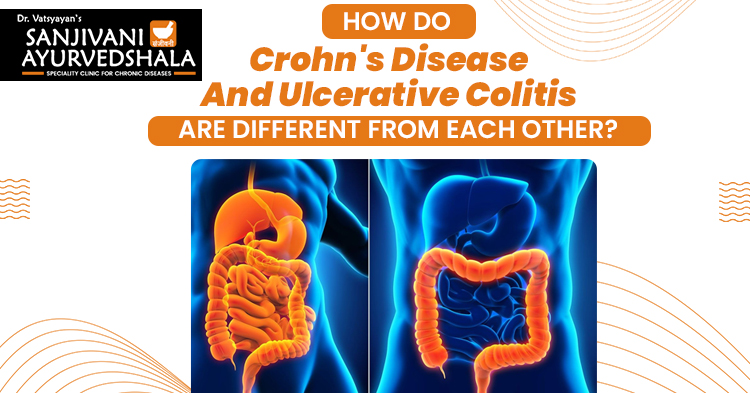

How do Crohn’s disease and Ulcerative colitis are different from each other?
Difference b/w Crohn’s disease and Ulcerative colitis
Crohn’s disease and ulcerative colitis are inflammatory bowel disorders which damage and result in inflammation in the GI tract. The GI tract is beneficial to absorb nutrients, digest food, and waste elimination. Inflammation in the GI tract affect normal functioning and leads to symptoms like:
- Rectal bleeding
- Weight loss
- Abdominal pain
- Diarrhea
- Fatigue
The GI tract inflammation occurs in ulcerative colitis and Crohn’s patients. If you are experiencing these symptoms or any other unwanted issue then consult the renowned Ayurvedic doctor in Ludhiana.
Where Crohn’s disease and ulcerative colitis is located?
Ulcerative colitis and Crohn’s disease location are different from each other. Crohn’s disease may affect the GI tract part that includes the following:
- Stomach
- Small & large intestine
- Esophagus
- Mouth
- Rectum
- Anus
Ulcerative colitis is limited to the colon (large intestine) that usually begins from the rectum. The inflammation is different in ulcerative colitis and Crohn’s disease.
The inflammation occurs in patches if it is Crohn’s disease and it might reach the bowel wall thickness.
On the other hand, in ulcerative colitis, the inflammation occurs in the innermost lining of the mucosa (intestine wall), and it is going to reach the colon.
What are the different symptoms of Ulcerative colitis and Crohn’s disease?
The difference in inflammation and location are going to lead to different symptoms in both conditions. However, the major symptoms b/w both these conditions are going to overlap. Some of the common symptoms which will vary from person to person are:
- Weight loss
- Fatigue
- Fever
- Nausea
- Diarrhea
- Loss of Appetite
- Irregular bowel movements
- Abdominal pain & cramps
- Vomiting
Some of the subtle differences in symptoms
- Bleeding
In ulcerative colitis, rectum bleeding is less common as compared to Crohn’s disease.
- Abdominal pain
Patients with ulcerative colitis are going to experience intermittent pain which occurs with bowel movements. On the other hand, people with Crohn’s disease will experience abdominal pain and perianal issues which result in skin tags, anal sores, and many more.
Whether it is Crohn’s disease or ulcerative colitis the child’s growth is affected in both cases.
In both conditions symptoms usually revolve around the digestive system where inflammation occurs. The doctor is going to ask you if someone in your family has experienced bowel disease in the past. Blood tests will help to understand better about your condition. Along with that, endoscopy, blood tests, X-rays, and stool samples are taken.
What are the possible treatment options?
Treatment options for both conditions include steroids and medications which help to target the inflammatory issues. When the inflammation is reduced the shared symptoms are going to be reduced to a great extent.
